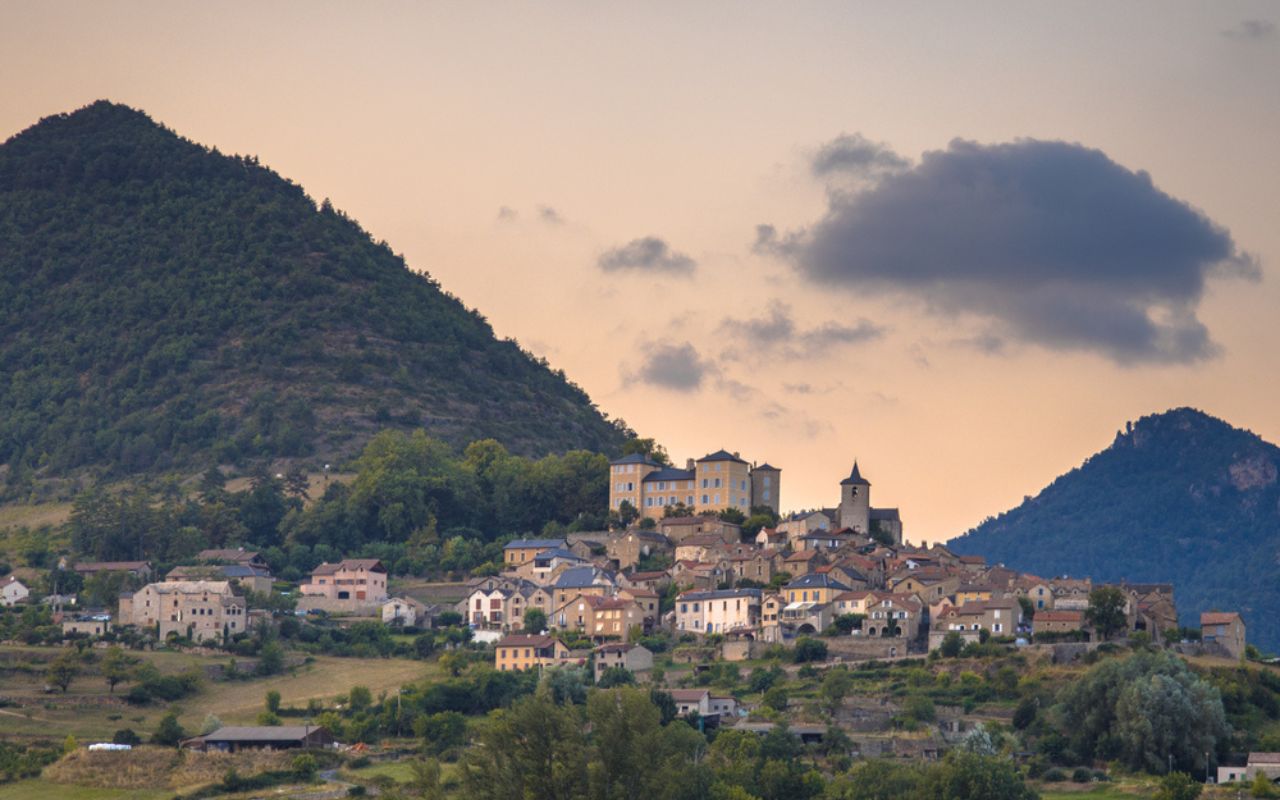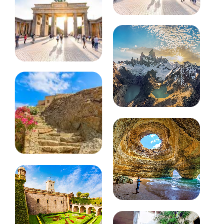The 9 most beautiful villages to discover in the Cévennes

The Cévennes is a mountainous region in the south of France, with a varied, unspoilt landscape and a rich cultural and historical heritage. Among the region’s many attractions are its villages, which bear witness to the life and traditions of its inhabitants over the centuries. Here is a selection of nine villages to discover in the Cévennes, each with its own charm and special character.
1. Vézénobres, a village perched on a promontory
Vézénobres is a medieval village overlooking the Gardon valley, offering panoramic views of the surrounding area. It is listed as one of the Most Beautiful Villages in France and one of the Villages of Character in the Gard. It boasts a remarkable architectural heritage, with Romanesque houses, cobbled streets, fortified gates and the remains of the Girard château. Vézénobres is also famous for its dried fig production, which is the subject of an orchard-conservatory and a museum dedicated to this fruit.
2. Sauve, a village on the banks of the Vidourle
Sauve is a fortified village stretching along the Vidourle river, at the foot of the Coutach massif. It has been awarded the “Village de Caractère” and “Ville et Métiers d’Art” labels, as it is home to many artists and craftspeople who draw their inspiration from the surrounding countryside. Sauve boasts a diverse heritage, with remains of medieval ramparts, Renaissance town houses, fountains and bridges. It is also famous for the Mer des Rochers (Sea of Rocks), a limestone chaos that overlooks the village and features some amazing rock formations.
3. Mialet, a village at the heart of Protestant history
Mialet is a village in the upper Gardon valley, in the heart of the Cévennes National Park. It is marked by the history of Protestantism, which gave rise to persecutions and revolts in the 17th and 18th centuries. Mialet is home to Mas Soubeyran, the birthplace of Camisard leader Pierre Laporte, known as Rolland, which has now been converted into the Musée du Désert, retracing the history of the Cévennes Protestants. Mialet also has a remarkable natural heritage, with the Grotte de Trabuc, the largest cave in the Cévennes, containing thousands of blue stalactites.
4. Saint Martial, a village at the foot of Mont Aigoual
Saint Martial is a village perched at an altitude of 800 metres at the foot of Mont Aigoual, the highest peak in the Cévennes. It offers exceptional views over the surrounding valleys and distant summits. It has a remarkable religious heritage, with its 12th-century Romanesque church, decorated with a 17th-century fresco, and its Saint-Pierre chapel, which houses a statue of Saint Martial, the first bishop of Limoges. Saint Martial is also a lively village, with an annual fête votive and a fair selling local produce.
5. Barjac, a Renaissance town at the crossroads of the gorges
Barjac is a Renaissance town situated between the Ardèche and Cèze gorges, at the crossroads of the Cévennes and Provence. It boasts a rich architectural heritage, with its 17th-century château, 16th-century Banne tower, town houses, gates and fountains. Barjac is also a dynamic town, hosting two international antiques and second-hand goods fairs, at Easter and 15 August, as well as a festival of socially-aware cinema, Chansons de Parole, in July.
6. Dourbies, a village in the heart of the Cévennes
Dourbies is a mountain village in the Aigoual massif, on the border between the Cévennes and Larzac. It takes its name from the river that runs through it, the Dourbie, which offers a varied and unspoilt landscape of gorges, waterfalls and meadows. Dourbies is a village full of character, with old houses, a Romanesque church and a 12th-century chapel. It is also a village of traditions, celebrating the annual transhumance festival on the last Sunday in May.
7. Aigremont, a village with two circular streets
Aigremont is a village in the foothills of the Cévennes mountains, with the distinctive feature of being organised as a double circulade, i.e. two concentric circles of houses around a centre. This type of town planning bears witness to the medieval origins of the village, which was fortified and protected by a castle. Aigremont has an interesting historical and cultural heritage, with its 12th-century church, 19th-century wash-house, silk museum and theatre festival, which takes place every summer.
8. Aujac and its 17 hamlets
Aujac is a village made up of 17 hamlets scattered across the slopes of the Bougès massif in the Cévennes. It offers an exceptional natural setting, with chestnut forests, streams and springs, dolmens and strangely shaped rocks. Aujac is a village steeped in history, having witnessed the Wars of Religion, the Camisards revolt and the Resistance during the Second World War. It boasts a remarkable architectural heritage, with its 12th-century castle, 17th-century church and 18th-century clock tower.
9. Corconne, a medieval village
Corconne is a medieval village situated at the foot of the cliffs of the Coutach massif, overlooking the Gardon valley. It has preserved vestiges of its past, with ancient houses, towers, gates and ramparts. Corconne is also known for its very special geological site, the Pont du Hasard, which is a natural arch linking the two cliffs at the end of the gorge. Corconne is a lively village, with an annual fête votive, a wine and local produce fair and a Christmas market.
200 audioguided tours for cities all around the world
Download
